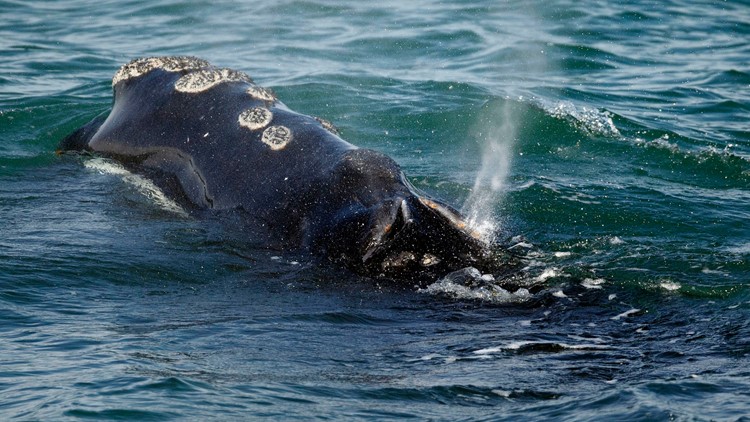A half-dozen North Atlantic right whales have died in the past month, leading scientists, government officials and conservationists to call for a swift response to protect the endangered species.
There are only a little more than 400 of the right whales left. All six of the dead whales have been found in the Gulf of St. Lawrence off Canada, and at least three appear to have died after they were hit by ships.
The deaths have led scientists to sound the alarm about a potentially catastrophic loss to the population. The deaths are especially troubling because they include females, said Philip Hamilton, research scientist with the Anderson Cabot Center for Ocean Life at the New England Aquarium.
"If we're going to have deaths, they just can't be female," Hamilton said, adding the population is down to only about 100 reproductive females. "We need a different system."
Right whales have suffered high mortality and poor reproduction in recent years, particularly in 2017. The whales appear to be traveling in different areas of the ocean than usual because of food availability, said Nick Record, senior research scientist at Bigelow Laboratory for Ocean Sciences in Maine.
That shift, linked to the warming of the ocean, has apparently brought whales outside protected zones and left them vulnerable, he said.
RELATED: Maine coast already feeling effects of climate change
RELATED: In hot water? Study says warming may reduce sea life by 17%
"Animals like whales that have to figure out where their food is, they have to figure out a new environment as they go," Record said. "You can almost think of the whales like climate migration."
Right whales are so named because they were considered the "right whale" to hunt during the commercial whaling era of long ago. They could often be hunted close to the coast and provided a reliable source of whale oil, a precious commodity of the time.
Those characteristics led to the decimation of the population, and it has struggled to rebuild since. The animals numbered as few as about 270 as recently as 1990, and as many as about 480 in 2010.
Fisheries and Oceans Canada said Tuesday that the necropsy of the sixth whale, which was named Clipper, was completed in Quebec, and that the animal's death appeared consistent with blunt trauma from a vessel strike.
Ship strikes and entanglement in fishing gear are two top threats to right whales often cited by conservationists.
RELATED: Maine lawmakers say whale protection must protect lobstering
RELATED: Whales have worse than average year for entanglement in gear
A speed restriction of 10 knots in the area where the whale was first observed remained in effect, the agency said. It also said it has increased surveillance over the Gulf of St. Lawrence to assess the location of the whales and make sure mariners comply with rules.
Chris Oliver, assistant administrator for the National Oceanic and Atmospheric Administration's National Marine Fisheries Service, said Wednesday he is calling for a meeting with the Canadian government to request "immediate action to provide comprehensive protection" for the whales.
"Preventing any additional deaths of North Atlantic right whales is our highest priority. To do this, we must work with our partners to strengthen protections immediately," Oliver said in a statement.



